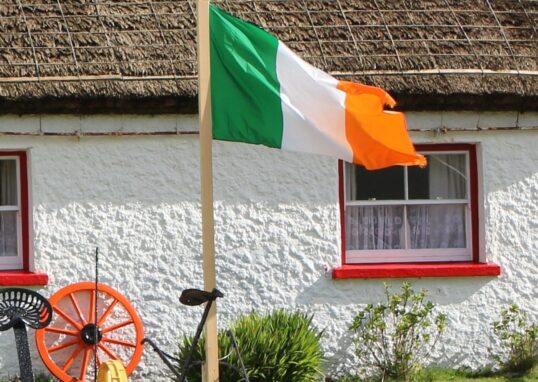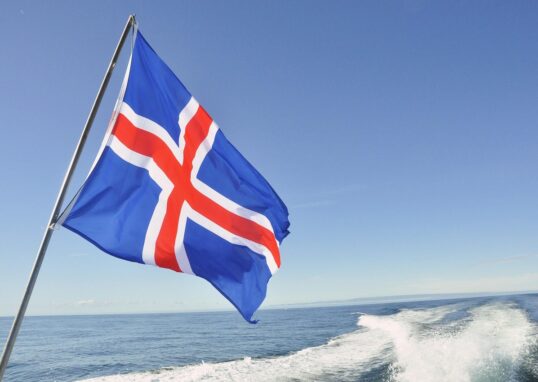
White Continent’s Fragile Edge: A Land of Shattered Light and Silence
Peninsula, Antarctic
The Antarctic Peninsula, 1,200 kilometers (746 miles) long towards South America, is the northernmost point of Antarctica. It is a region with outstanding nature, unique animals, and ice. This is a popular travel spot for searching for the extraordinary in extreme, one of the most remote places on the planet. The main attractions are the breathtaking scenery, wildlife observation, research facilities, cultural sites, outdoor activities, and environmental issues. The Antarctic Peninsula is a remote and ancient forest providing some of Earth’s most amazing landscapes and unique wildlife. Antarctica is known as the “banana belt”, the gateway to the icy miracles on the Peninsula continent and a large destination for polar explorers and adventurous fans.
Spectacular Scenery
Glaciers and Icebergs
The Antarctic Peninsula showcases magnificent glaciers and icebergs, which combine to give the whole area a surreal and ever-changing backdrop consisting of huge, sky-scraping ice cliffs, ginormous glaciers, and flimsy icebergs that are floating around.
Mountains and Fjords
Rocky mountain summits stand high above the cold waters with white snow, giving the area an unmatchable look, while gorge-like fjords, in contrast with the natural greenness of the environment, offer a stunning view.
The dramatic scenes on the peninsula include massive glaciers, mountain chains, and huge snow cabinets that cool in the surrounding water, causing icebergs. The Lamiere channel, often called “Kodak gap” for its photogenic beauty, is a narrow road provided by vertical rocks and glaciers, and provides a real cruise experience. A volcanic caldera, the island of deception, is another attraction, and gives a glimpse of its geothermal hot springs and abandoned whaling stations in the human history of Antarctica.
Wildlife Viewing
Wildlife is plentiful on the Antarctic Peninsula, making it a paradise for nature enthusiasts. The region is home to large colonies of penguins, including Edely, Chinstap, and Gentu species, which can be seen hunting and feeding on rocky coasts. Sealing, such as the bearded seal, leopard seal, and crab seal, is often seen resting on the snow, while whales, including humpback, orca, and minke, usually swim in horizontal water. Birds can increase albatross, petrels, and pour over the icy landscape.
Penguins
The peninsula is one of the top spots on Earth to encounter penguins in their natural environment, and along with its colonies of thousands of penguins, it sympathetically introduces those who would like to marvel at penguins closely.
Seals
Several types of seals, such as Weddell seals, crabeater seals, and leopard seals, can be seen relaxing on ice floes and even hunting in the icy waters.
Whales
Whale watching is at its peak during the summer due to the favorable conditions that the whales encounter during their daily feeding. Elephant Island and King George offer further scope for discovery near the South Shetland Islands. These islands are home to research stations created by different countries and provide an insight into scientific activity performed in this remote corner of the world. Half Moon Island, with a crescent-shaped bay and abundant wildlife, is one of the favorite visitor spots. Adrenalin junkies can enjoy kayaking, camping, and mountaineering, where they can soak up Antarctica’s pristine scenery. Zodiac cruises provide a front-row view of icebergs and wildlife, while a polar plunge is an adrenaline-pumping activity of wading into the cold waters.
Scientific Research Stations
Palmer Station (USA)
The sleepy team of Sansiversapeake Island has concentrated on biology, specifically marine biology and the effects of climate change.
Vernadsky Research Base: Faraday Station, a.k.a., was formerly a research station that studied the ozone layer and has the southernmost bar in the world.
Historic Sites
Port Lockroy
A once British scientific station, now a post office and a museum, provides insight into the beginnings of Antarctic research and study.
Deception Island
However, this volcanic island was previously a whaling station and later a British military base. It is a place of great historical interest not only because of its unique geothermal features but also because some remnants of earlier structures exist.
Adventure Activities
Zodiac Cruising
Therefore, the tours to the Antarctic Peninsula are planned together with the excursions on Zodiac boats, which are small inflatable boats that allow people to enjoy direct nature experiences without harming it. The cruise provides an incredible opportunity to visit the beautiful coastline, be amazed by glaciers, or even spy on wildlife.
Kayaking
On the other hand, kayaking offers a different perspective by allowing one to be part of the environment and find a way through the cracks among icebergs. One could also expect up-close wildlife encounters and to navigate through narrow channels.
Camping
Some tours offer the chance to camp overnight on the Antarctic continent, providing an immersive experience in Antarctica’s stark beauty and absolute silence during the summer months. This is the only opportunity to become a part of the Antarctic area’s rugged beauty and complete silence throughout the summer.
Cultural and Environmental Significance
Scientific Importance
The Antarctic Peninsula is a very good region for studying the effects of global warming. The main reason is the melting of ice on glaciers, which causes sea levels to rise and changes in the marine ecosystem.
Antarctic Treaty
For now, the Peninsula is under the jurisdiction of the Antarctic Treaty System, which designates it as a scientific preserve. Thus, the system encourages the cooperation of various countries in carrying out scientific research and safeguarding the continent from the use of its resources and the likely worsening of the environment.
Practical Information
Best Time to Visit
The period from November to March, the Southern Hemisphere summer, is known for chilly to mild temperatures, sunlit days from morning to late in the evening, and millions of birds and marine mammals that take advantage of the long days due to the highly productive sea areas in the Peninsula. It is the best time of the year to visit.
Getting There
Expedition Cruises: people usually prefer to go for an Antarctic Peninsula tour on a small ship that sails out of Ushuaia, a town at the southern tip of Argentina, as it is the most popular way. The journey through the Drake Passage, one of the most unpredictable pelagic environments on the planet, takes approximately one to two days, depending on the weather conditions. Besides this, there are options for taking a plane from Punta Arenas to King George Island and beginning the journey there, therefore omitting the crossing of theDrake Passage as an alternative.
What to Bring
Clothing
The first thing that is of basic necessity to do is dress in layers when you are out in weather conditions it is too cold, windy, and wet. Waterproof outer layers, thermal base layers, hats, gloves, and sturdy boots are necessary. Besides this, sunglasses and sunscreens are also crucial because of the heavy reflection of light by the snow and ice. Equipment for Photographs: Wilderness and landscapes can best be captured by a camera with a good zoom lens. Besides that, the cases you get should have waterproof properties, or go for dry bags, to keep the weather from damaging your equipment.
Environmental Responsibility
Leave No Trace
Anyone coming to Antarctica has to abide by sound environmental guidelines as they seek to save endangered ecosystems. This encompasses refraining from the mess caused by the waste left to be disposed of, such as waste being sent back to the ship, and the prescribed paths to lessen the harm to the landscape. IAATO Rules: A document by the International Association of Antarctica Tour Operators (IAATO) furnishes guidelines for environmentally friendly travel in Antarctica. The document lists the rules that include security requirements, such as keeping a safe distance from wildlife, and conservation aspects by visiting historic sites in a responsible manner. In addition, biosecurity measures for flora and fauna must be observed appropriately to keep the non-native species from entering the area.
The Antarctic Peninsula and the surroundings provide a lifetime experience once in one of the most remote and pristine areas of Earth. Whether you do miracles in your icy landscape, against unique wildlife, or discover historical sites, the peninsula offers an unforgettable journey in Antarctica’s heart of the frozen forest. The ancient beauty and a feeling of isolation make it a destination for bucket-listers and nature lovers. Some travellers also visit McMurdo Station on Ross Island in Antarctica, the largest Antarctic research station. The United States manages it through the Antarctic Program and is a hub of scientific research, logistics support, and international cooperation.
Conclusion
You would almost certainly never encounter the Antarctic Peninsula in your lifetime. For those of you who like to go off the grid, it is one of the farthest and most untouched places on our planet where you can experience adventure. The peninsula is not a place that can be described in a few words; it has too much beauty and a dynamic history. It is therefore a destination site that makes each of the visitors feel not only that they are inspired, but also that they are touched in such a way that they want to return over and over again. Be it with the Zodiac, the kayak of the icy waters, or just on a walk absorbing the beauty, experience the wild and wonderful attributes of the land. This is a nature reprieve where nature is still on top, and the exploring spirit still goes on.









